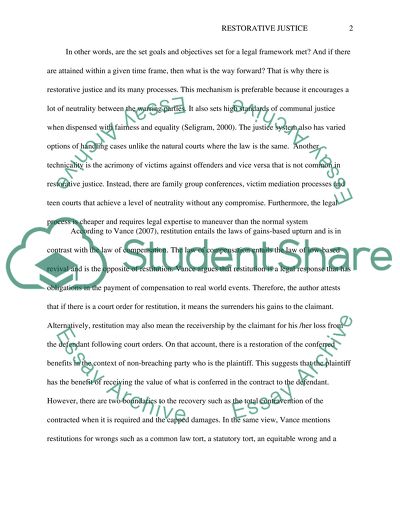Cite this document
(“Restorative Justice Dissertation Example | Topics and Well Written Essays - 2500 words”, n.d.)
Restorative Justice Dissertation Example | Topics and Well Written Essays - 2500 words. Retrieved from https://studentshare.org/law/1401585-restorative-justice
Restorative Justice Dissertation Example | Topics and Well Written Essays - 2500 words. Retrieved from https://studentshare.org/law/1401585-restorative-justice
(Restorative Justice Dissertation Example | Topics and Well Written Essays - 2500 Words)
Restorative Justice Dissertation Example | Topics and Well Written Essays - 2500 Words. https://studentshare.org/law/1401585-restorative-justice.
Restorative Justice Dissertation Example | Topics and Well Written Essays - 2500 Words. https://studentshare.org/law/1401585-restorative-justice.
“Restorative Justice Dissertation Example | Topics and Well Written Essays - 2500 Words”, n.d. https://studentshare.org/law/1401585-restorative-justice.


